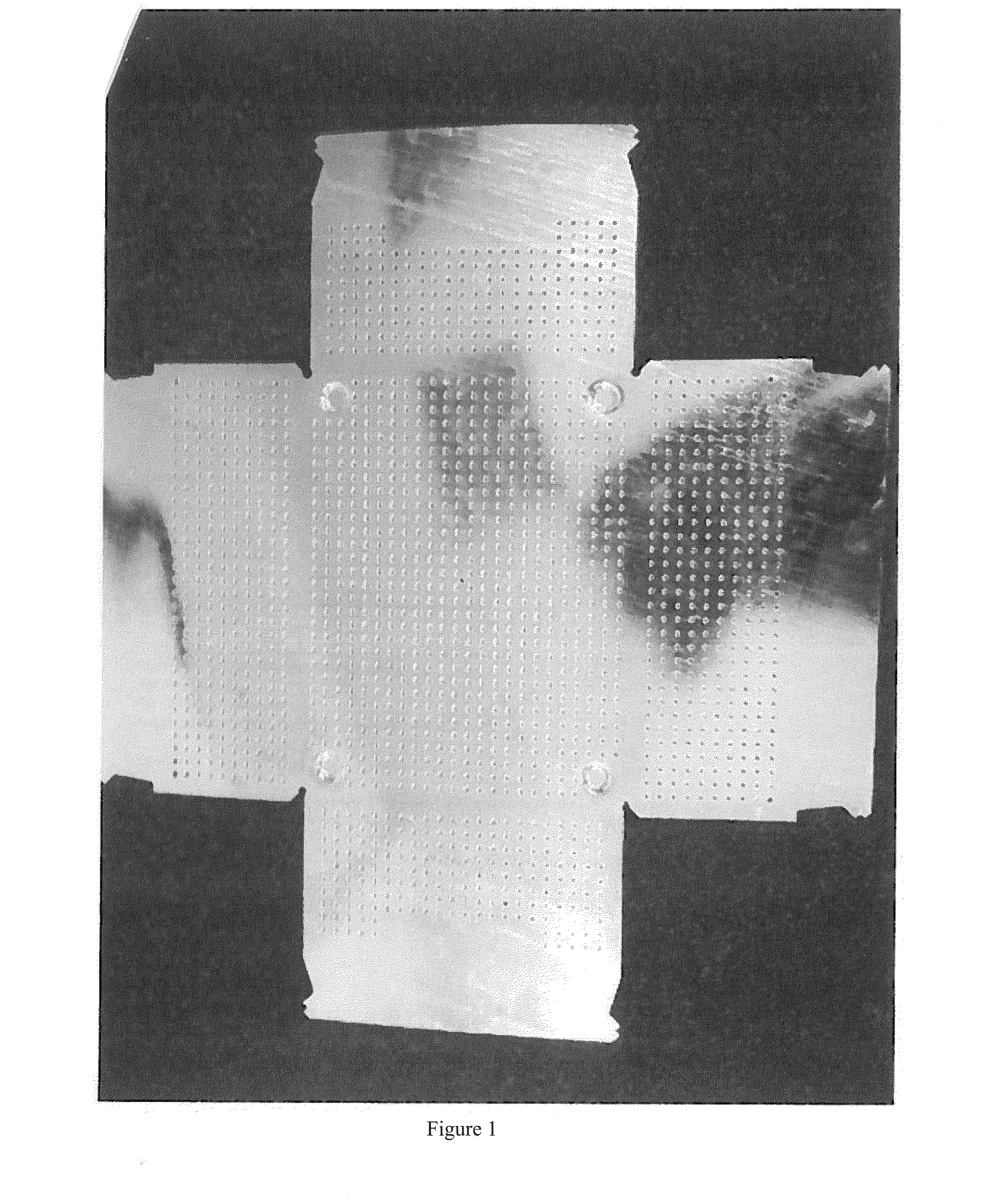Galvanized metal objects and their manufacturing process
a technology of galvanized metal and manufacturing process, which is applied in the field of galvanized metal manufacturing, can solve the problems of limiting the competitiveness or the type of products that can be assembled, the method is not applicable in practice, and the significant health hazards of the welding process are the generation of fumes and gasses, and achieves the effect of efficient production
- Summary
- Abstract
- Description
- Claims
- Application Information
AI Technical Summary
Benefits of technology
Problems solved by technology
Method used
Image
Examples
example
[0043]A parallepipedic box with dimensions 40 cm×30 cm has been produced from the pre-cut steel sheet matrix with multiple free edges and with punched holes shown in FIG. 1, the said sheet matrix having a thickness of 1 mm and being coated with a 10 μm thick zinc alloy layer obtained by hot dipping into a molten bath of a zinc alloy comprising 5% by weight aluminum, followed by bending the wall portions at perpendicular angle with respect to the central portion to form the desired parallepipedic shape, and finally forming a series of clinching pints for fastening the multiple adjacent edges. The resulting box is highly corrosion resistant and may be useful, inter alia, for transporting goods.
PUM
| Property | Measurement | Unit |
|---|---|---|
| thickness | aaaaa | aaaaa |
| thickness | aaaaa | aaaaa |
| temperature | aaaaa | aaaaa |
Abstract
Description
Claims
Application Information
 Login to View More
Login to View More - R&D
- Intellectual Property
- Life Sciences
- Materials
- Tech Scout
- Unparalleled Data Quality
- Higher Quality Content
- 60% Fewer Hallucinations
Browse by: Latest US Patents, China's latest patents, Technical Efficacy Thesaurus, Application Domain, Technology Topic, Popular Technical Reports.
© 2025 PatSnap. All rights reserved.Legal|Privacy policy|Modern Slavery Act Transparency Statement|Sitemap|About US| Contact US: help@patsnap.com

